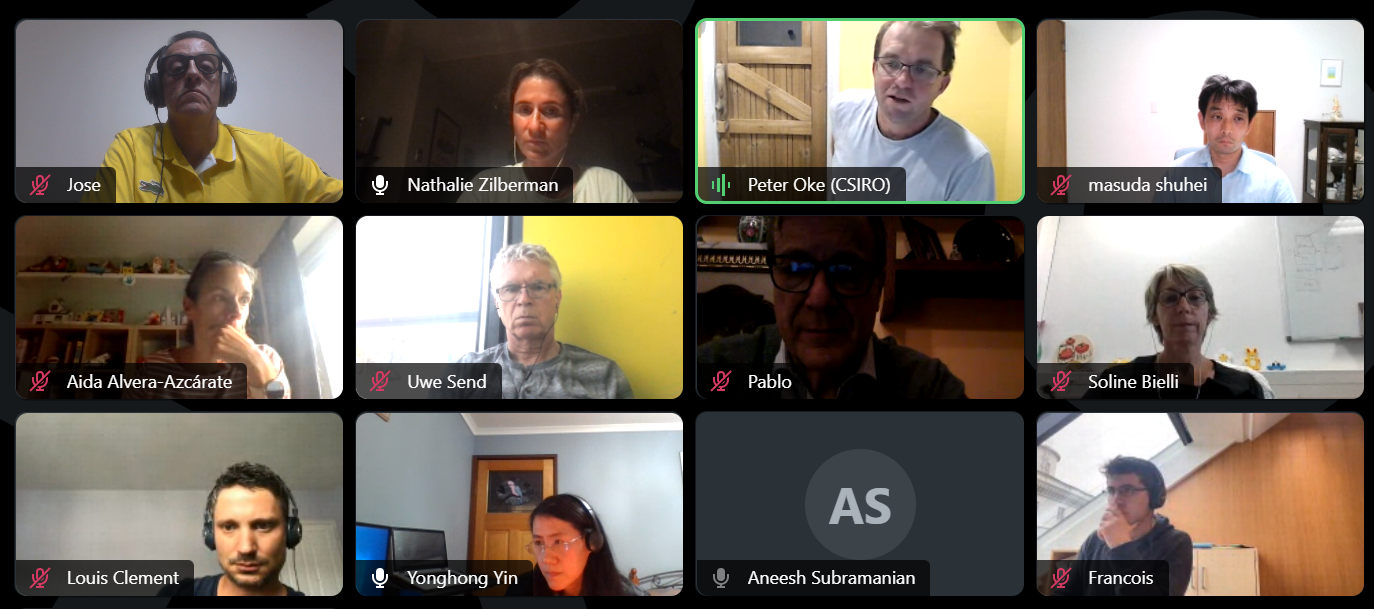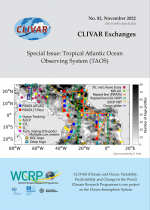GSOP Teleconference Organized on 17 August

Attendees
Soline Bielli, Uwe Send, Aneesh Subramanian, Aneesh Subramanian, Aida Alvera-Azcárate, Masuda shuhei, Peter Oke, Nathalie Zilberman, Soline Bielli, Pablo Canziani, Uwe Send, Francois Counillon, Yonghong Yin, Louis Clement.
Agenda:
00 - Welcome, Peter and Nathalie
05 - Meeting update, Nathalie
15 - New member talk, Yonghong
30 - Proposed joint study (metrics), Peter
60 - Discussion, Peter and Nathalie
70 - Actions and next meeting, Jose
75 - Close
Nathalie gave an update on the organization of the 7th Argo Science Workshop. This international workshop is hosted by Euro-Argo and will take place at the Royal Belgian Institute of Natural Sciences in Brussels on 11-13 October 2022, as a hybrid event with in-person and virtual attendance options. Members discussed the possibility of having a GSOP panel meeting alongside this event, however not enough people is planning to attend, so the panel will discuss other options to met later this year or next year.
Yonghong presented a talk: Data assimilation for the Bureau of Meteorology’s Operational Climate Forecast System ACCESS-S, with the outline:
- ACCESS-S (Australian Community Climate Earth-System Simulator-Seasonal): S1 vs S2
- Coupled data assimilation scheme for ACCESS-S2: weakly-coupled using EnKF-C (EnOI) to assimilation ocean in situ observations
- Validation for the multi-year reanalysis with both assimilated and independent observations from Global Tropical Moored Buoy Array (GTMBA)
- Comparison with EN4 objective analysis and vertical velocity
- Comparative analysis of upper ocean heat content (T300) and salinity content (S300) variability from reanalyses
- SST forecast skill
- Summary
Peter made a short presentation with a proposed joint study on metrics and dynamical balance, to be made by members of the group, To lead the discussion Peter summarized two broad topics: Argo under ice and Argo under eddies
The proposed question for the study is: How does data assimilation impact dynamical balance?
Proposed approach: Compare dynamical balance of a model with and without assimilation
What is unique here:
- We could use multiple model/analysis/assimilation systems
- We could use multiple analysis systems, all filtered by the same model
Those willing to crunch some numbers for us include: me, Aneesh, Soline, Francois, and Yonghong. Peter will prepare a discussion document so we can mature the ideas and get started.
We also agreed at the meeting to aim to meet again in the first week of October.













